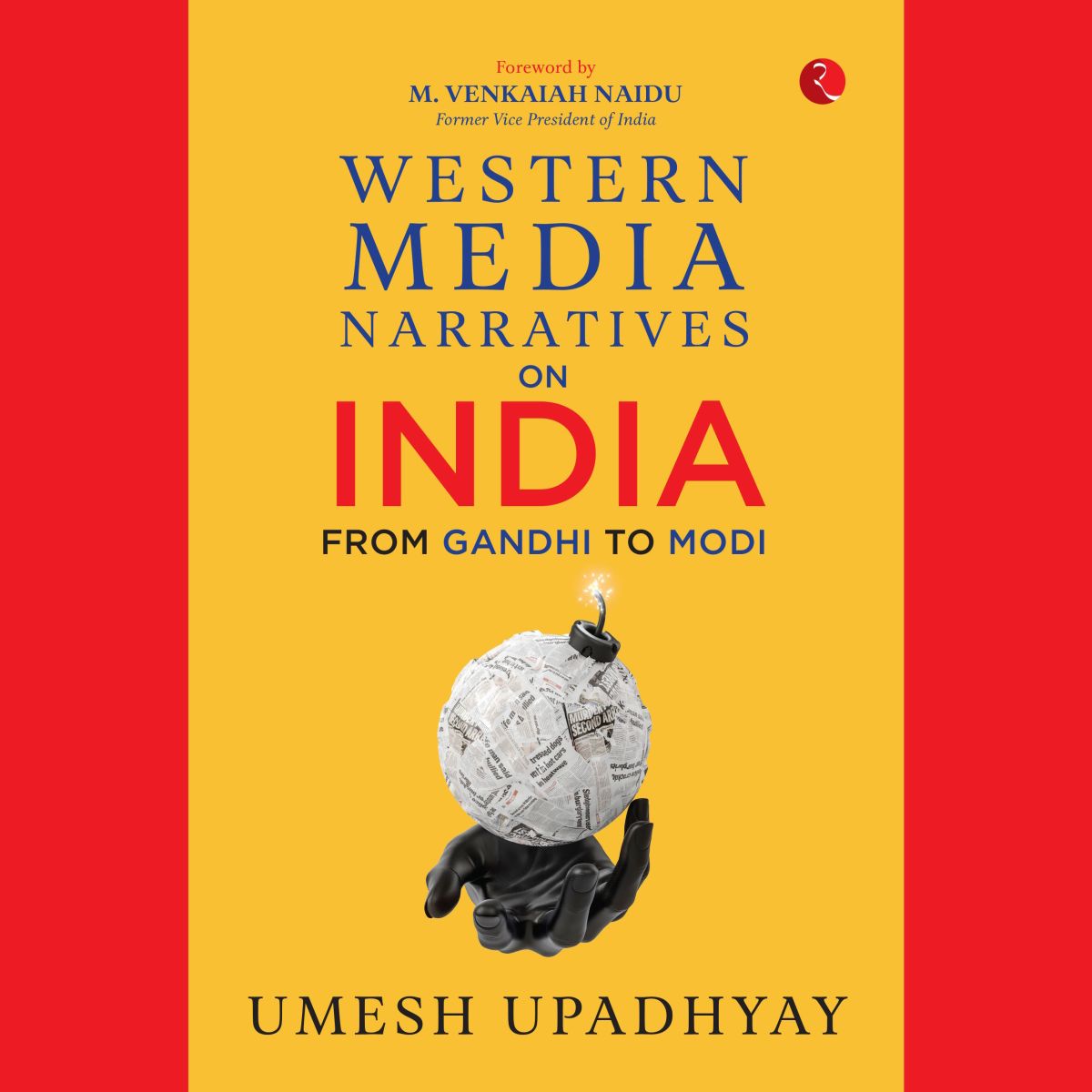One of the most iconic cultural symbols of Japan – one that also underlines its prowess with advanced technologies and engineering expertise – is the Bullet Train, which has been ferrying people across Japan since the 1960s. In her book Dream Super-Express: A Cultural History of the World’s First Bullet Train, Professor Jessamyn Abel takes a deep-dive into the social-political-cultural phenomenon that is the Japanese Bullet Train and explains what is it that makes it work and why the Bullet Train is still relevant after all these decades. ‘In Dream Super-Express, Abel contends that understanding the various, often contradictory, images of the bullet train reveal how infrastructure operates beyond its intended use as a means of transportation to perform cultural and sociological functions. The multi-layered dreams surrounding this high-speed railway tell a history not only of nation-building but of resistance and disruption,’ says the publisher’s note. ‘A symbol of the ‘new Japan’ displayed at World’s Fairs, depicted in travel posters, and celebrated as the product of a national spirit of innovation, the Tōkaidō Shinkansen, the first bullet train, dubbed the ‘dream super-express’ represents the bold aspirations of a nation rebranding itself after military defeat,’ it adds.
Jessamyn Abel is a historian of Japan and Associate Professor in Asian Studies at Pennsylvania State University, in the US. ‘I am a historian of modern Japan with interests in cultural history, technology, infrastructure, sports, and international relations. My current research is on grassroots promotion of democracy in Japan under American occupation,’ she says. BooksFirst had an opportunity to ask her a few questions in the context of Dream Super-Express, and here is what she had to say:
BooksFirst: Tell us about your interest in trains, especially the Japanese Bullet Train. What was it that inspired you to write about one of Japan’s biggest, most recognizable socio-cultural icons? What were some of the biggest challenges you faced in the research effort for this book?
Jessamyn Abel: I became interested in the bullet train while doing some research on the 1964 Tokyo Olympics for my previous book, which was on internationalism in Japan. Because the first bullet train started running just before the Olympics, I saw many news articles and other commentary on the new line. I was surprised to see a tremendous amount of excitement about a train, given that the world was already in the jet age and even entering the space age, so I wanted to know why. The answer was more complicated than I expected, and this book is the result of my efforts to understand it.
The biggest challenge was perhaps the tremendous volume of material that has been produced about the bullet train. It was impossible to read everything about it, so I had to limit myself to specific aspects.
While some other countries also have fast trains, none is as much of a cultural icon as Japan’s Bullet Train. What reasons would you attribute to that?
Much of this has to do with successful marketing efforts by Japanese National Railways (JNR) and subsequently by JNR’s private successors, the regional Japan Rail companies. The railways, sometimes in cooperation with other government agencies, have run very successful promotions both at home and abroad placing the bullet train at the center of Japan’s national identity. One example of this that I examine in the book is the way the new line was displayed in the Japanese Pavilion at the 1964-1965 New York World’s Fair.
While the Japanese people, by and large, love their Bullet Train, there have been landowner protests over the decades and that has sometimes stopped the Bullet Train network from expanding as fast (or as far and wide) as it might otherwise have. Do you believe that is still an issue, in 2024?
The tension between development and local opposition is most certainly still an issue today. In fact, progress on the new maglev line, the Chūō Shinkansen, is currently in question, as the governor of Shizuoka Prefecture has refused to allow construction due to the potential for environmental damage. This shows how Japanese society has changed, such that economic and industrial development no longer so easily outweigh concerns about social or environmental issues. That said, the bullet train continues to be an important means of intercity transportation in Japan.
During your research for Dream Super-Express, you might have spoken to former designers and/or engineers – people who actually made the Bullet Train happen. Any particularly interesting conversations that you would like to recount here?
My research for the book was archival and did not include oral histories, but one thing that surprised me in the sources (and that ended up constituting a chapter in the book) was the way that the construction of a rail system that was being called “the train of the future” sparked memories of the past. The planning of the world’s fastest train made many Japanese people think back to an earlier moment of railway prowess in the Japanese empire. I was also surprised to find that observers thought about the bullet train as part of Japan’s emerging “information society” in the 1960s and 1970s. It had not occurred to me to see a railway line as a means of communication, but that’s how some thinkers at the time wrote about it. This also ended up being the focus of one chapter of the book.
Coming to books, are you an ardent reader yourself? Do you get to read a fair number of books every year? Any favourite authors? Would you like to tell us about the three most memorable books you’ve read in recent months, and the three that you look forward to reading before the end of this year?
I read for my work all of the time. One of my recent favorite books on travel and Japanese imperialism is Kate McDonald’s Placing Empire: Travel and the Social Imagination in Imperial Japan. This book shows how mobility (and immobility) across the empire worked to bolster Japanese imperial expansion in the early twentieth century. I’ve started working on a new project on Japan’s postwar democratization, so I’ve been reading a lot about democracy lately. In that category, Tessa Morris-Suzuki’s Japan’s Living Politics is just wonderful, giving examples of various democratizing efforts in different sectors of Japanese society over the course of Japan’s modern history. I’m also enjoying Nikhil Menon’s Planning Democracy: Modern India’s Quest for Development.
The question of what I’m looking forward to reading is harder, as my “to read” pile is towering quite high. At the top of my list right now is the recent recipient of a major book prize in my field: Sherzod Muminov, Eleven Winders of Discontent, which is about the Siberian internment of Japanese soldiers in Soviet labor camps after the Asia-Pacific War. I also enjoy reading fiction, and right now I am eager to get started on the second volume of the Three Body Problem series by Cixin Liu. I also want to read a book that my son recommended to me, Annihilation, by Jeff Vendermeer. This is also part of a trilogy, so it looks like my fiction slate is filled for the foreseeable future.
With the publisher’s consent, here is an excerpt from Dream Super-Express
JTB took advantage of the excitement surrounding the opening of the new line to promote a series of group trips centered on using the bullet train and other new transportation infrastructure. The introduction in Journey of a set of itineraries grouped under the heading “Trips to Commemorate the Opening of the Shinkansen” mixed stereotypical views of each city with the allure of new modes of transportation. “On a day trip using the super-express connecting Tokyo and New Osaka, [see] the urban beauty of modern Tokyo, which was remarkably transformed by hosting the Olympics, and visit the sights of the monorail, expressway, and Olympic facilities; or conversely, Kyoto and Osaka have Kyoto’s atmosphere of the circuit of famous gardens… and the new essential, a pleasant drive on the Meishin Expressway.” Th e goal of these trips was not just to view contemporary architecture or ancient gardens, but specifically to experience the speed and excitement of new modes of transportation: of course, the bullet train itself, but also the monorail connecting Haneda Airport to downtown Tokyo (similarly completed just in time for the Olympics) and the new expressways built to facilitate high- speed movement of the growing number of automobiles on the roads of the Tōkaidō region. As a Kyoto shinbun editorial argued, improvements in transportation infrastructure transformed and sometimes impeded familiar sights, but they could also create new iconic views. For instance, the construction of the Ōhashi Bridge crossing Lake Biwa might have ruined the famous sight of “wild geese at Katada” (one of the “Eight Views of Omi” depicted in a series of nineteenth- century woodblock prints) but a new set of famous views of Lake Biwa had already been enumerated, and the editorial called for inclusion of the bridge itself on that list. No longer just a way to get to a destination, road and rail themselves formed a part of the spectacle to be enjoyed by sightseers in the modern Japanese city.
The bullet train’s technical function of shrinking time-distances and the resulting revision of how far a person could roam on a quick trip changed not only travel plans but also attitudes about other parts of Japan. The ability to get from one end of the Tōkaidō to the other and back within a day seems to have made people in each city feel closer together and more familiar, even if they themselves were not regularly speeding back and forth. Tokyo and Osaka came to be seen not as distant cities— the antipodes of the Tōkaidō— but rather as close neighbors, even two parts of a single megalopolis. This was not a novel dynamic. Considering the development of railroads in nineteenth-century Europe, for instance, Schivelbusch argues that the railroad changed perceptions of time and space, as faster transportation effectively shortened distances and expanded accessibility, making it easier for people in cities to visit remote places and for the products of those places to be brought to urban markets. Steven Ericson notes a similar compression in people’s sense of space accompanying late nineteenth-century railroad construction in Japan: the first Tōkaidō line, completed in 1889, reduced travel time between Tokyo and Kobe from a week by horse-drawn omnibus or a few days by steamship to just twenty hours by train. And the development of railways and other transportation infrastructures in the early twentieth century promoted a sense of the expanding empire as a unified (if variegated) national space.
The 1964 bullet train made a relatively small change, cutting the journey between Tokyo and Osaka, which had only recently been reduced from nine to under seven hours, down to three hours on the fastest Hikari super-express. With the opening of the New Tōkaidō Line, a Tokyo businessman could take a day trip for a meeting in Osaka; a Kansai housewife could go shopping in Tokyo and be back in time to greet her husband when he came home from work; a foreign tourist could while away the morning in Kyoto’s ancient temples, enjoy an aft ernoon sightseeing through the bullet train window, and admire the sunset from the revolving Sky Lounge of Tokyo’s Hotel New Otani. While an extra few hours might seem relatively insignificant, fueled by the promotional machinery of JTB, the shrinking travel time and expanded capacity changed the way that people interacted with and thought about the Tōkaidō cities and the distance between them.
Pundits, celebrities, and other early bullet train riders mused publicly about these changes in the pages of newspapers and journals. A prominent factor was volume: with the convenience created by high-speed travel, more people could travel more frequently between the cities on the New Tōkaidō Line, thus tightening the bonds among them. Even as construction was being completed, there persisted among Osakans a sense that they were misunderstood by Tokyoites and the rest of Japan, but new patterns of travel and increased transportation capacity had the potential to create a sense of connectedness among the residents of cities along the line. Some predicted that Tokyo would become a familiar place to more frequent visitors from Osaka, and interactions with the people of Osaka would be commonplace for residents of Tokyo. They imagined that the bullet train would create new configurations of the world by bringing into contact people who would not otherwise meet, or just make people in distant cities think of each other in a more familiar way.
Excerpted from Dream Super Express: A Cultural History of the World’s First Bullet Train by Jessamyn R. Abel, published by Stanford University Press, ©2022 by the Board of Trustees of the Leland Stanford Junior University. All Rights Reserved.
Dream Super-Express: A Cultural History of the World’s First Bullet Train
Author: Jessamyn Abel
Publisher: Stanford University Press
Format: Hardcover / Paperback / Kindle
Price: Rs 12,027 / Rs 2,650 / Rs 2,546
Available on Amazon









